Natives by the Month
by Richard Burer
Bush regeneration specialist
January
Pandanus Palm - Pandanus tectorious
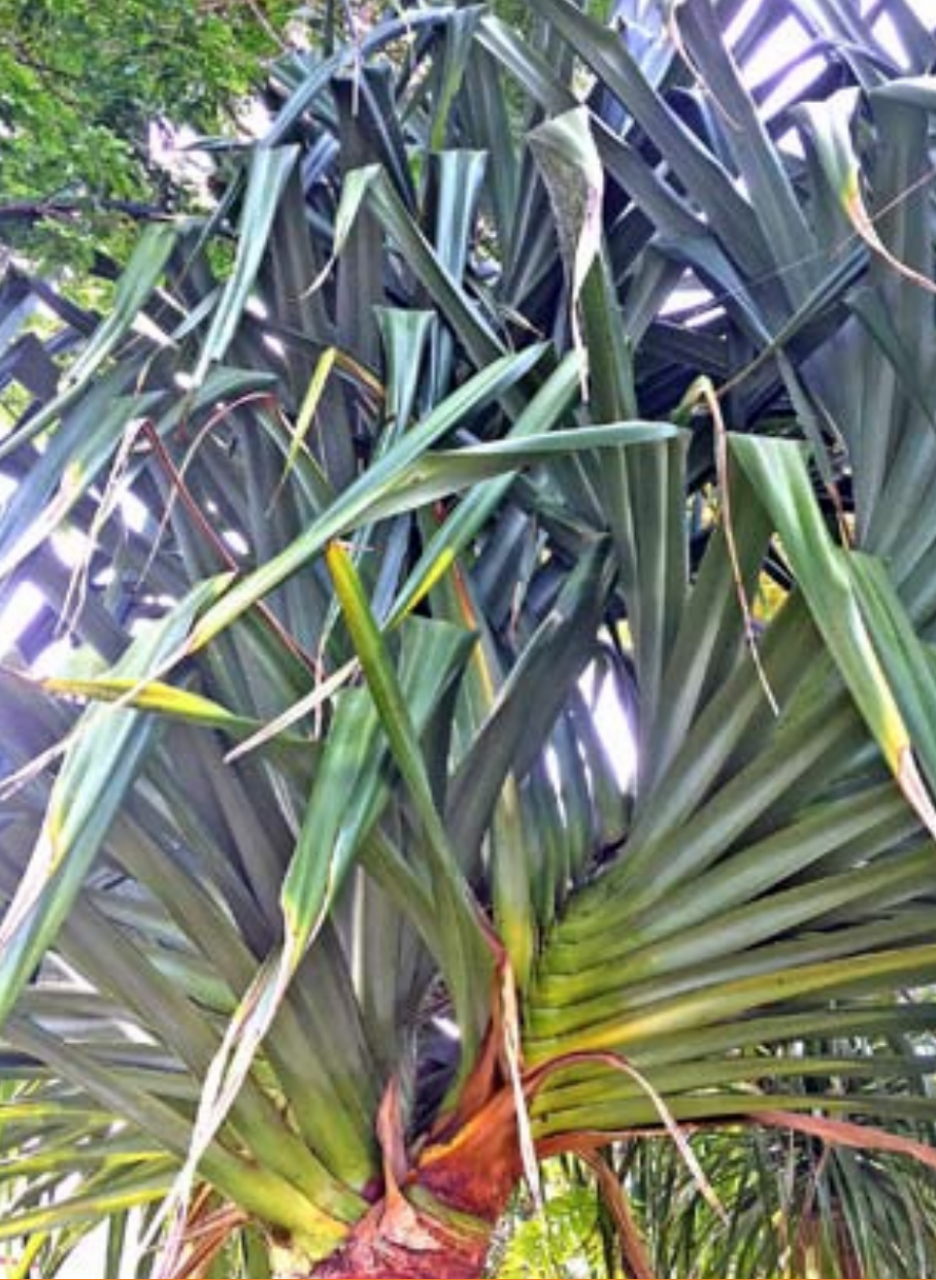
In the summer heat, I guess the perfect place to be will be seeking some shade on the beach.
Pandanus, palm is possibly a palm you might be sitting under on one of our local beaches.
Native in Australia from the Northern Rivers to Cape York, Pandanus palm is a cultural asset to Indigenous peoples of Australia, the Pacific Islands and beyond.
Pandanus has many uses including weaving materials, food, medicine, ceremonial uses and building supplies.
Found on coastal lowland plant communities, Pandanus is found typically on the edge of the ocean and is so stunning on the foredune as you see often.
Have a nice start to the year peoples, take time out, rest up and have at least one day in January sitting under this iconic, beautiful tree specimen.
Bangalow Palm - Archontrophoenix cunninghamiana
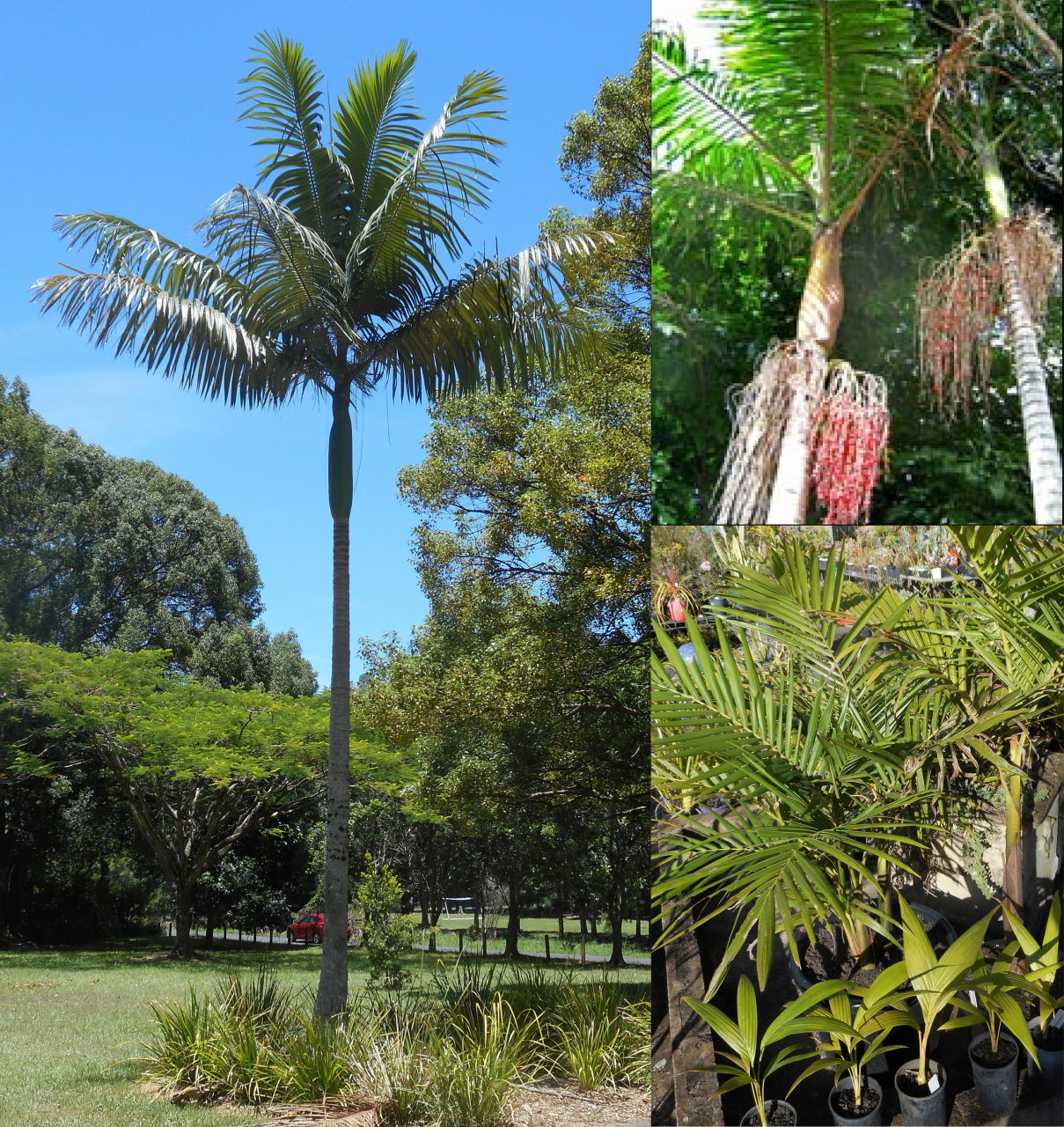
Bangalow palms, which grow to about 9m, are found mostly in moist situations, often along stream banks and wet alluvial flats, and sometimes on hill slopes.
The leaves of the Archontrophoenix cunninghamiana are large – up to several metres long – glossy and dark. In the spring, purple flowers create a striking appearance as they flower at the top of the trunk.
In early Summer, bright red fruit are borne in panicles below the tuft of leaves and add colour to go with the festive cheer.
Bangalow palms are common in this area, often found close to the source of subtropical rainforest remnants and regrowth. To see these palms near Nimbin, take a look towards Nimbin Rocks when standing a few kilometres out of town on the Nimbin Road. The palm valley below the cliffs is spectacular! Further afield, Protester’s Falls offers a chance to walk amongst these palms.
In the garden, the Bangalow palm is hardy and rewarding as it copes well in most situations. It can tolerate full sun and strong winds, but not frost.
It is easy to propagate with older seed from the forest floor. Only propagate from remnant rainforest groups of palms as domestic plantings could possibly cross breed with Alexander palms, a native of north ueensland, which is now widely planted in the area. Alexander palms are distinguished by the silver scales on the undersides of the leaflets.
December
Coastal Tuckeroo - Cupaniosis anacardiodes
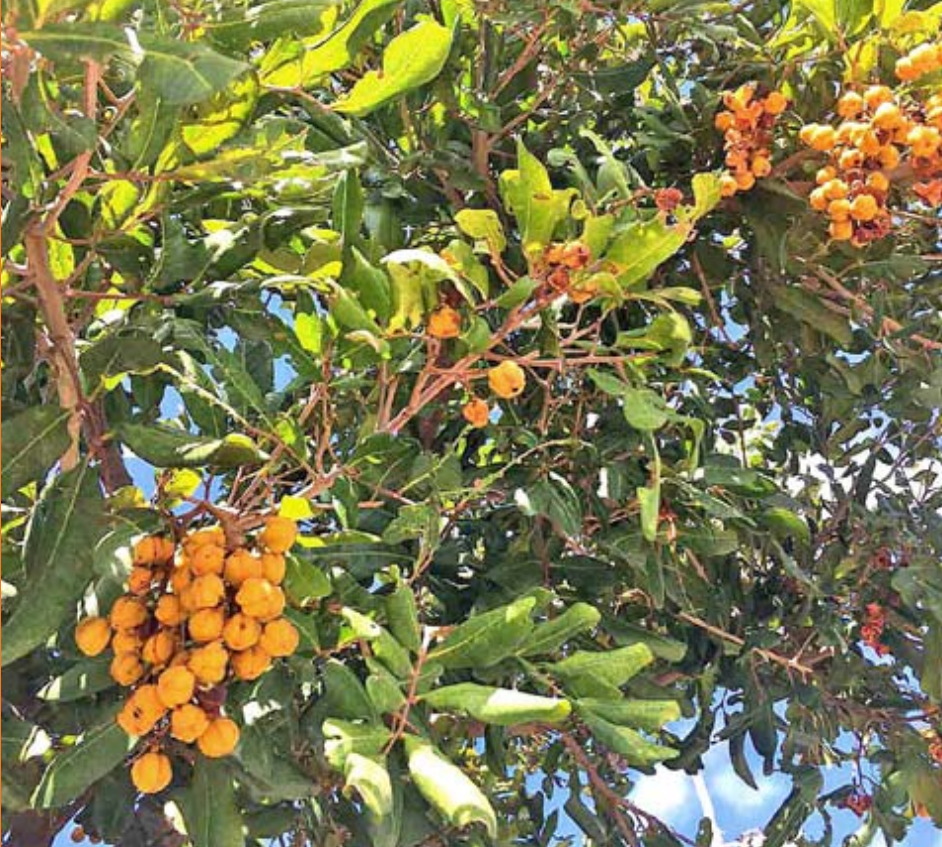
Summertime is here kiddies, and it’s time to take a trip to the beach.
If you find yourself on the edge of a hind dune, on the edge of littoral rainforest, coastal scrub or in a cosy beachfront park, you’ll probably have a chance of seeking shelter under this great small tree.
Coastal Tuckeroo is endemic on the NSW mid-north coast up into Queensland, and like last month it is not endemic to the forests of the Nimbin area, but can be found far inland, close to the edge of the Casino and around the Coraki area also.
At home I’ve found this tree grows modestly, and it can make a nice landscape plant.
Happy summertime, and find time to relax under these lovely coastal tree as you enjoy the coast this summertime.
Brown Kurrajong - North Coast Christmas Bush
Commersonia bertramia
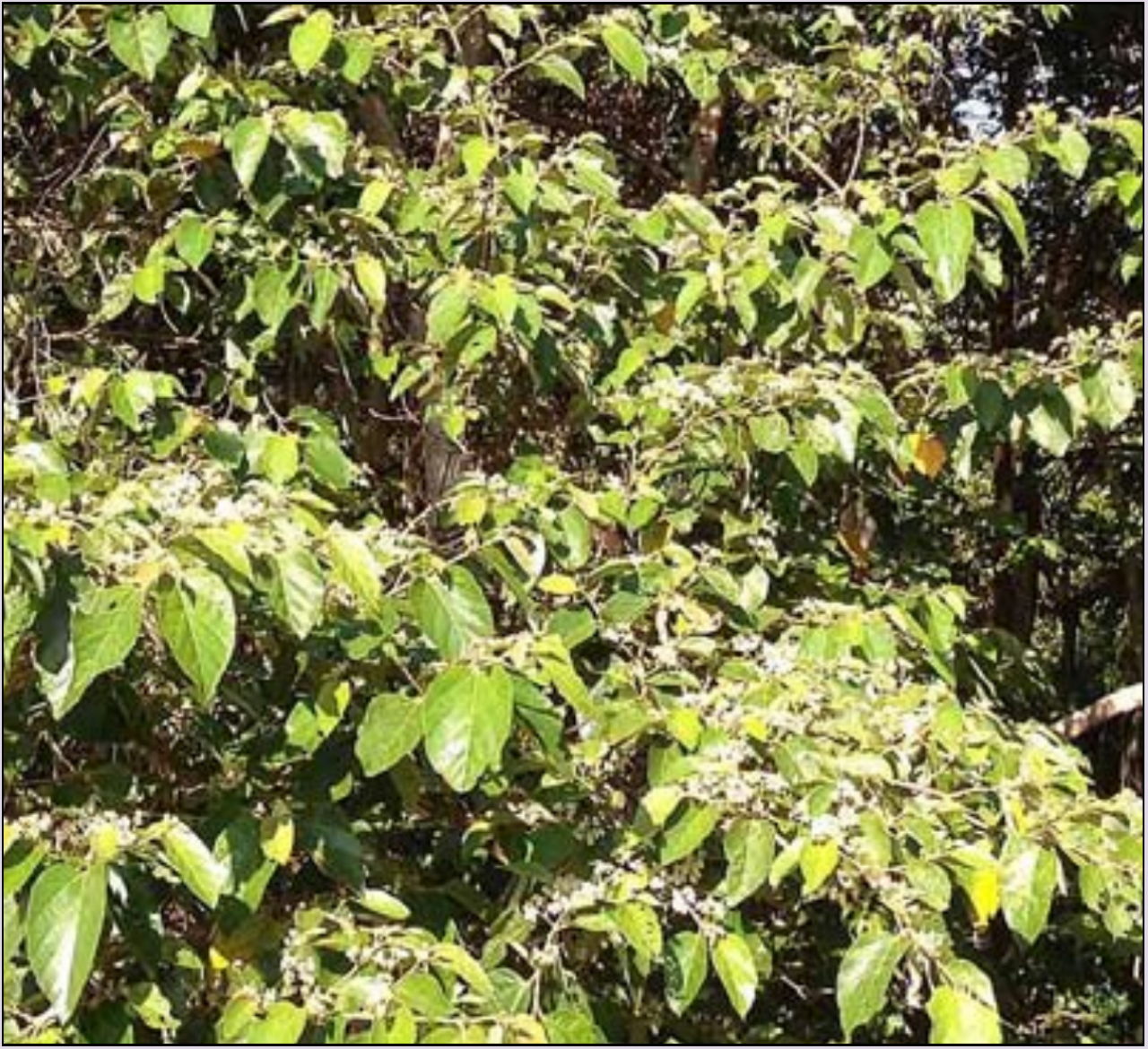
The colours of the festive season abound this month. Following from the red and pink flush of new growth of spring, we have an abundance of flowers at this time of the year.
One of the most noticeable is this shrub or tree, the Brown Kurrajong. Also know as North Coast Christmas Bush, this common tree with its clusters of densely covered white flowers is certainly the backdrop to early summer.
A common tree of drier rainforest margins, this species is good tree for establishing some canopy in your biodiversity plantings.
North Coast Christmas Bush has particular cultural importance, as the bark when stripped and treated makes a valuable twine.
Goori friends down on the coast still enjoy creating this and showing the available wares of our valuable bush heritage.
To grow your own, collect the bristly brown (dry) seed capsules in late summer and blend the lot and sow in your sandy prop mix. The fruits contain a number of tiny hard brown seeds.
November
Flame Tree - Brachychiton acerifolius
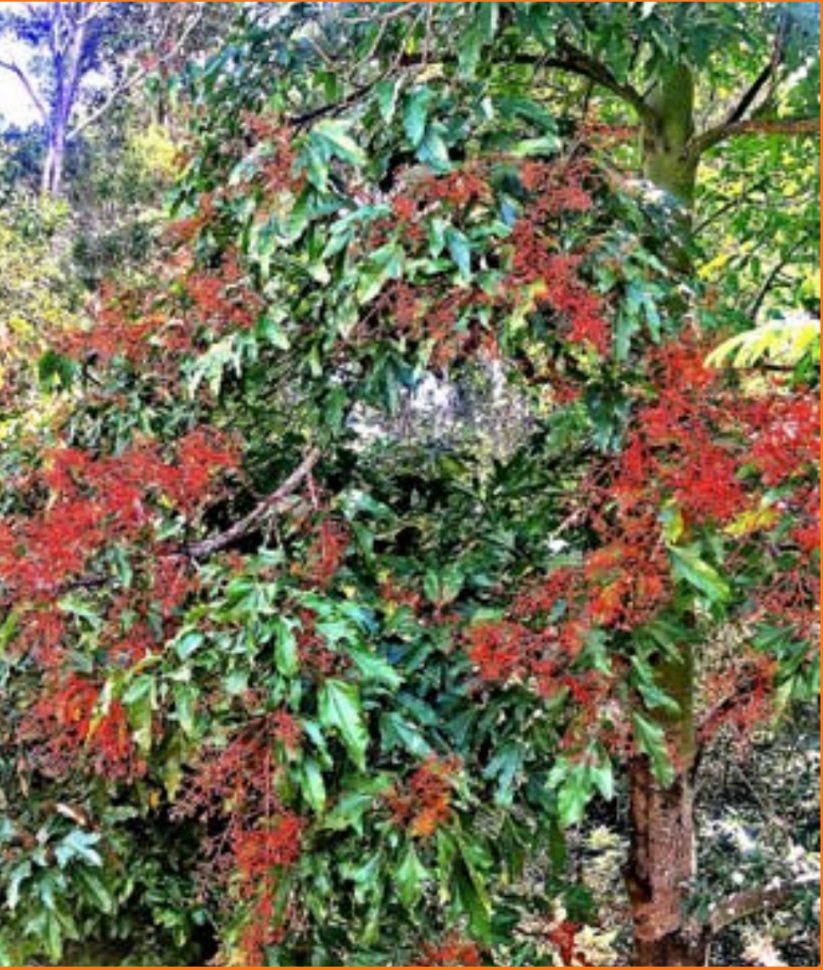
Yep, it’s that time again, a Northern Rivers monsoon, the wet bringing on the glorious summer flower of the Flame tree.
It’s an indigenous signature tree, bush food beverage and all round good reason as to why we all live here!
Two things about the Flame tree for me is the carpets of red flowers that guide me to my front door, and the crazy happy lorikeets and busy bee action.
I’ve planted several on the farm in Nimbin over the years, one took at least 15 years to flower, while others have flowered after several years or less.
Easy to grow from seed, so have a crack.
Palm Lily, Cordyline - Cordyline stricta
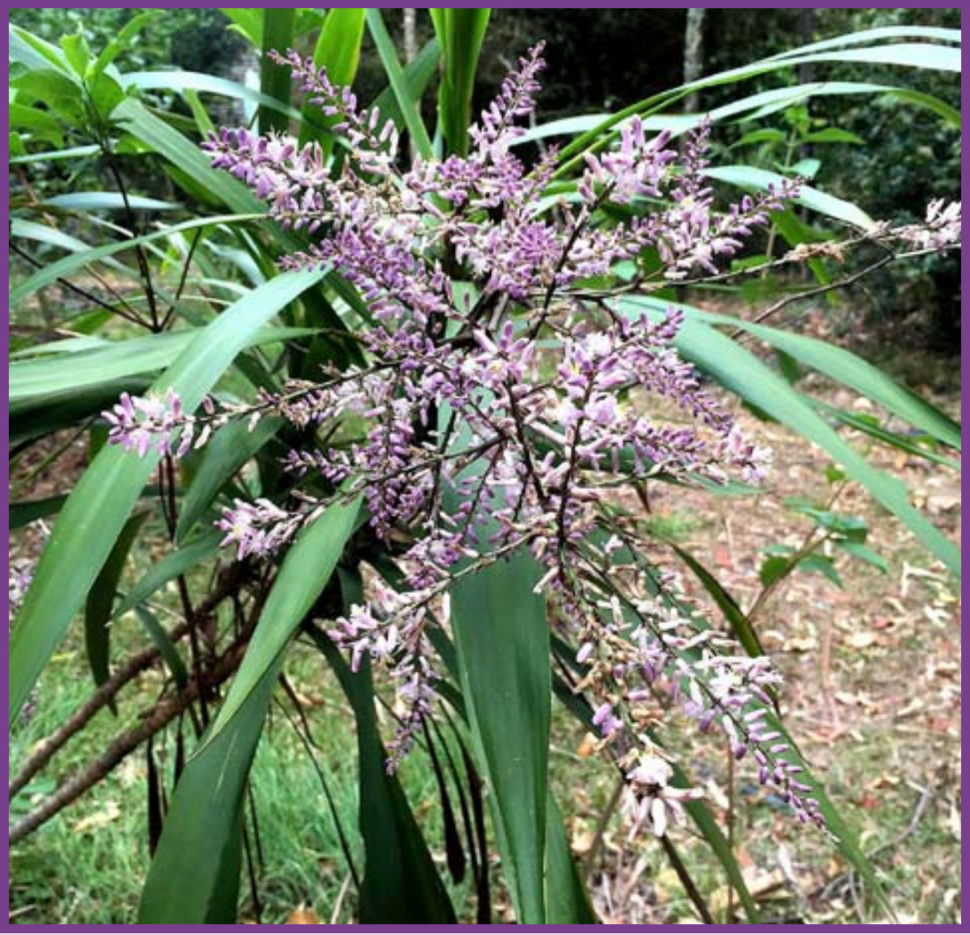
Cordyline stricta is one of my real favourites. Strictly it’s not local to the valleys of Nimbin, but it’s common on and closer to the coast, where it can be found growing alongside and underneath paperbarks in the wetlands that remain in that area.
In Nimbin, I’ve found this hardy multi-trunked Palm Lily to be very rewarding in the garden, as it is able to take full sun, dry and wet conditions and looks pretty nice against a wall, or in a subtropical garden setting and along bushland and garden paths.
Purple flowers in spring are followed by black berries in late summer, which make for easy propagation.
Note that this plant is endemic to coastal regions around Ballina and Byron Bay area. Useful as a backdrop in the garden, filling gaps along a fence line or path, and will enhance a garden with remnant native vegetation as an endangered local plant
October
False Sarsaparilla - Hardenbergia violacea
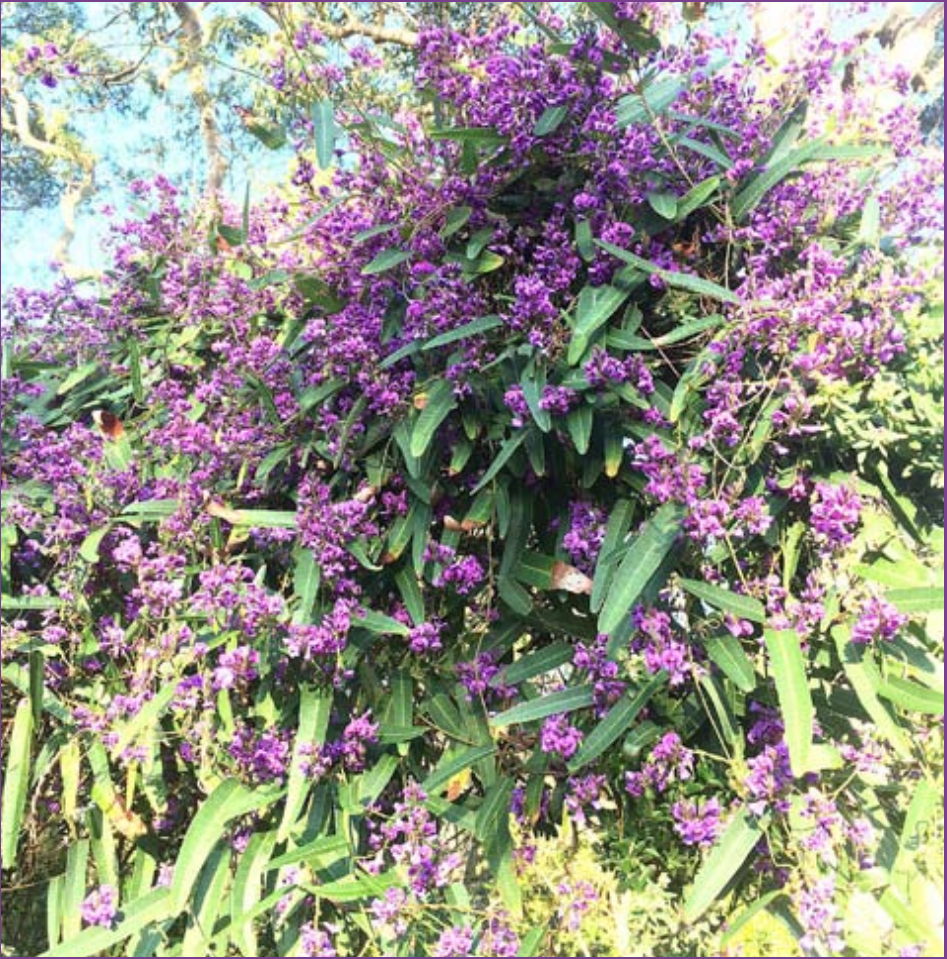
False Sarsaparilla is a most beautiful scrambler or twiner. Its rich purple pea-flowers truly announce the arrival of spring.
Common in the dryer forests in the area, Hardenbergia can often be seen sprawling over bare earth on roadsides, particularly after machinery or fire in that area.
In Nimbin, I often see individual scramblers year after year growing over their friends the shrubs in their usual habitat of dry sclerophyll forest.
To grow your own, simply pick the dry peas in summer, empty out the seed and sow in a well-drained seed raising mix. There are also a number of hybrid varieties available at nurseries.
September
Creek bottlebrush - Melaleuca viminalus
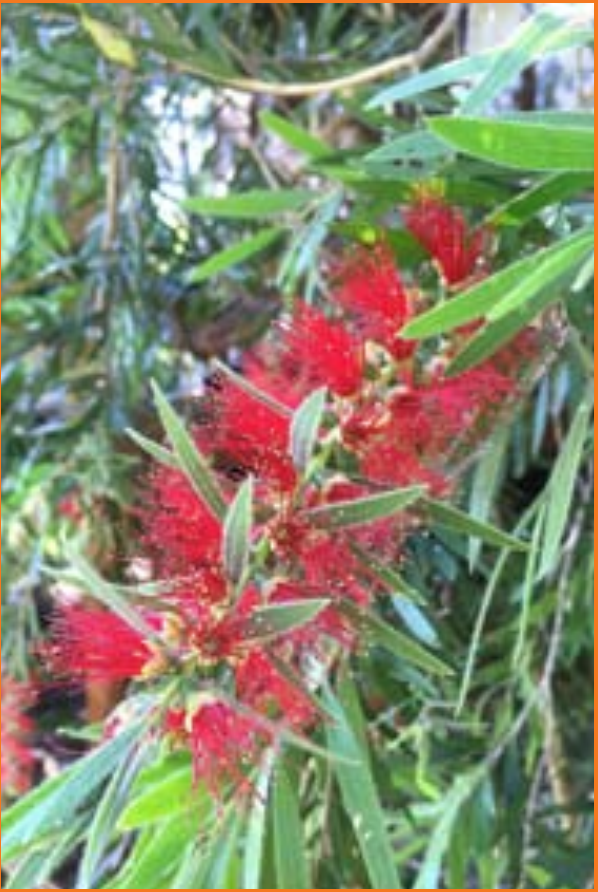
Spring is here when the bright red flowers of this bottlebrush put on their stunning red show. Usually accompanying the flowers are birds, especially honey eaters, who are the pollinators of this endemic species.
A multi trunked shrub or tree, Creek or Weeping bottlebrush can often be found on any of the more open creeks in the Nimbin area. A great stand can be viewed as you cross the Tweed River on the way to Wollumbin, where a fine stand is hugging the shallow parts of the river and river bank, its tiny fine seed being able to lodge and germinate in the crack of a rock or a layer of sandy loam.
Possibly one of the most horticulturally propagated plants in Australia, cultivars of melaleuca viminalus are widely used in landscape plantings and in gardens.
Creek bottlebrush or Weeping bottlebrush is an excellent tree in helping revegetation of creek banks, and is also a great garden/ windbreak or shelter belt species.
Easy to propagate.
August
Red Boppel Nut - Hicksbeachia pinnatifolia
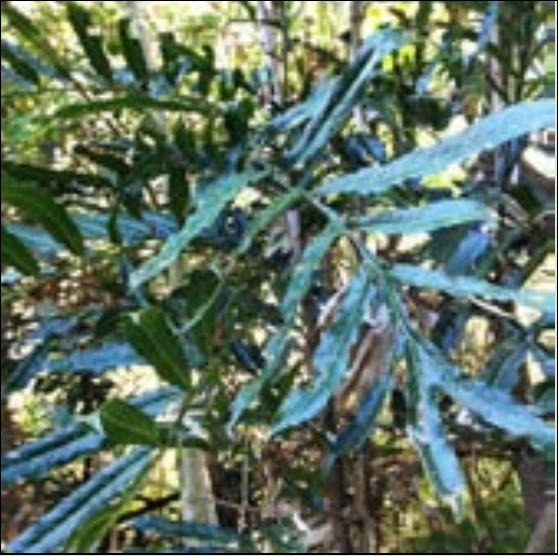
Red Boppel Nut is a small tree reaching a height of about 12m, usually with one or more unbranched stems arising from the root stock.
This stunning species’ usual habitat is subtropical rainforest on basaltic derived soils, and despite being reclassified as a threatened species, it is common in the Nimbin area. Those living east of the village, particularly those along Tuntable Creek, would enjoy seeing this attractive edible nut tree.
Flowering typically in September, but unusually now in the beginning of August, this tree’s nut can be harvested around Christmas. For those interested in growing it, plant directly into the soil within your conservation area.
However slow growth rates are common, and this rainforest tree does not like being grown in pots.
July
Wattle - Acacia
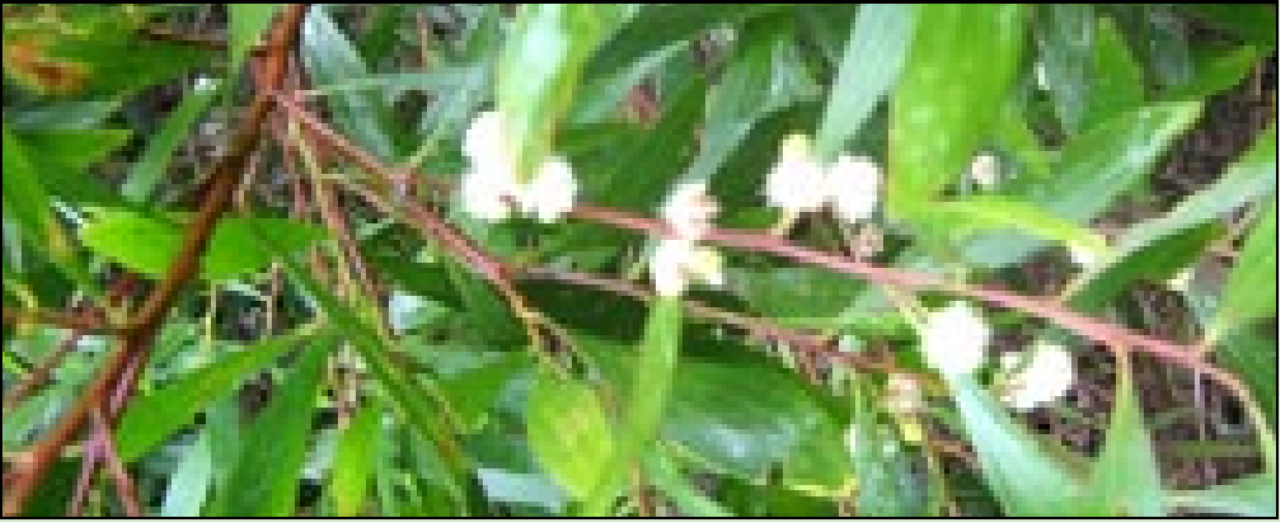
Longer days after the winter solstice bring our iconic wattle trees into bloom, causing cream and yellow flowers to dot the landscape in a carpet of colour.
Acacia frimbriata grows naturally a little south from here. It is an excellent garden planting, grows fast and is a great tonic for bees searching out pollen.
A local wattle Acacia melanoxylon (pictured) is a small to large tree of rainforest edges and scherophyll plant communities. It grows fast and is an excellent plant to regenerate your forest areas and is a must in your rainforest plantings.
It is a good pioneer species and easy to grow. The honey-like timber makes excellent drums.
June
Coast Banksia - Banksia integrifolia
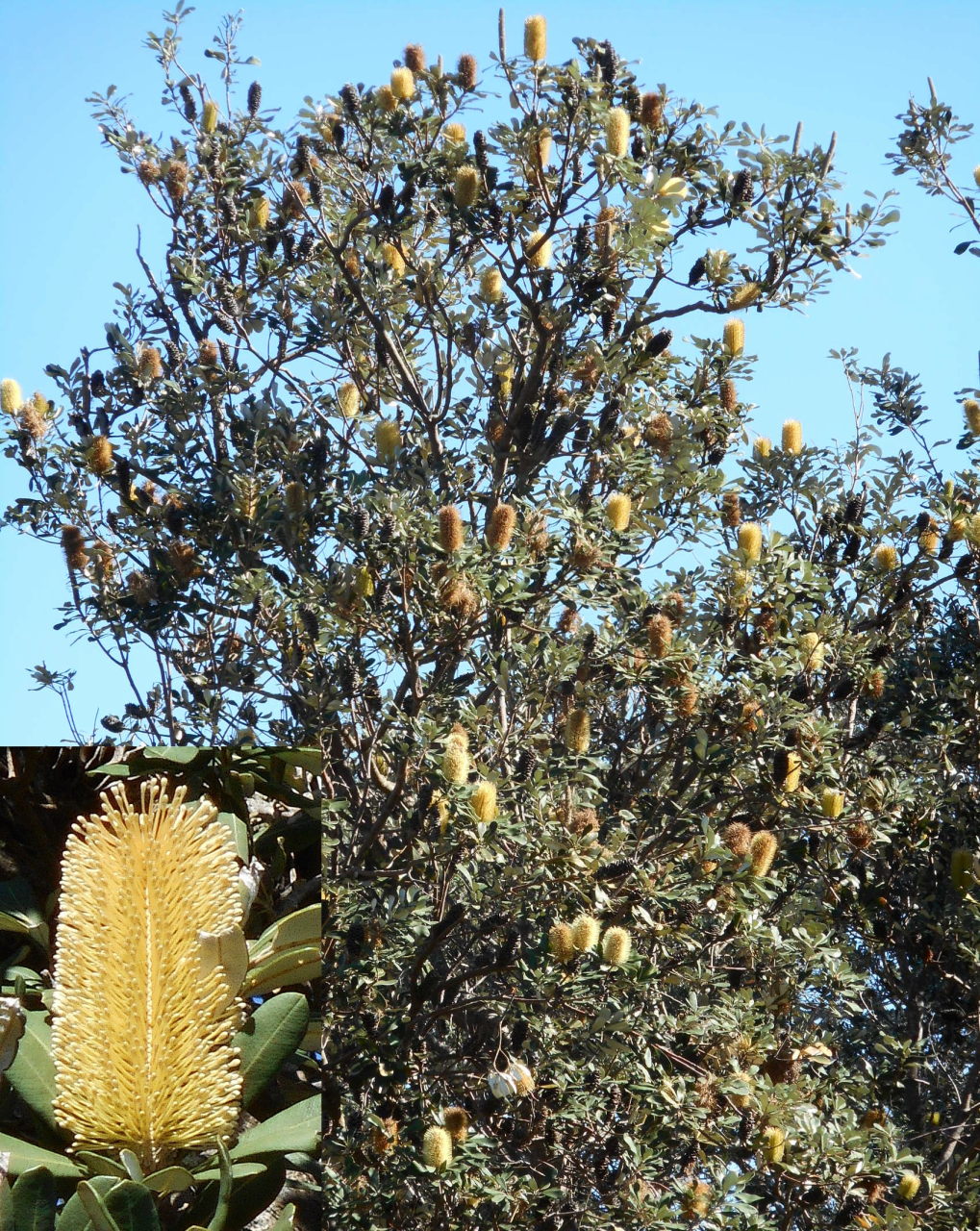
This month I sit overlooking the ocean between two coast Banksias a whale in between, and know that the whales and this species ‘Coast Banksia’ have had a long association of thousands of years,
watching each other as the whales pass, perhaps. The timely flowering offered indigenous people a calendar-like moment to remind them that the whale season was close.
A known cultural use of Banksia involves fire-making, as the fine fibre in the spent flower is perfect for initiating natural firestick practices.
This dear old friend, that grows to 16m high, is found throughout the north coast, and inland in NSW, Victoria and southern Queensland.
Locally, I have seen it at The Channon / Keerrong / Wongavale on sandy country, and it is also endemic at Nimbin Rocks.
May
Tea Tree - Meleauca alternifolia
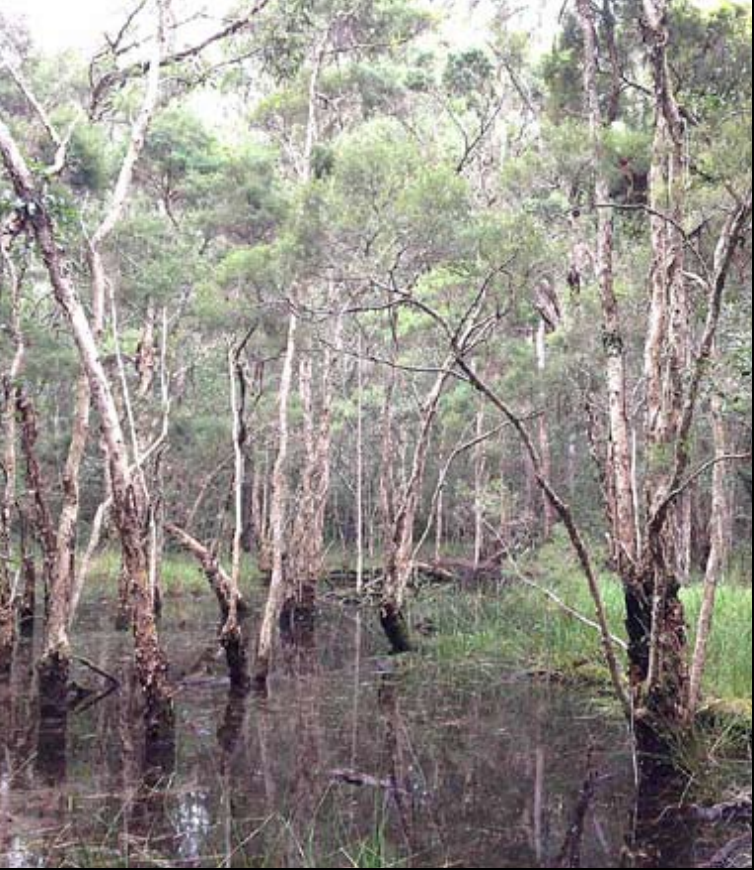
Revered by the Bundjalung nation of the northern rivers, Tea Tree was a very important cultural plant.
Tea Tree was used to treat wounds with poultices, and crushed leaves for inhaling in the treatment of colds. The anti-fungal properties of Melaleuca alternifolia was very important, particularly when living in swampy places, where Tea Tree is endemic.
Melaleuca alternifolia is a small tree that grows to several metres where it enjoys seasonal wet feet. It also grows happily in drier areas, and thrives in full sun or in the understory.
Whilst big areas are now under broad acre production on the Northern Rivers, it wasn’t so long ago that wild harvesting of Tea Tree on private land to distill your own oil was a simple, viable, clean and ethical product.
In Nimbin, I have friends in a community who have an ageing paddock of Tea Tree that has grown well and could easily be chain sawed and the regrowth harvested and distilled. Those wanting to grow their own will find this an easy tree to grow.
April
Brush Cherry - Syzygium australe
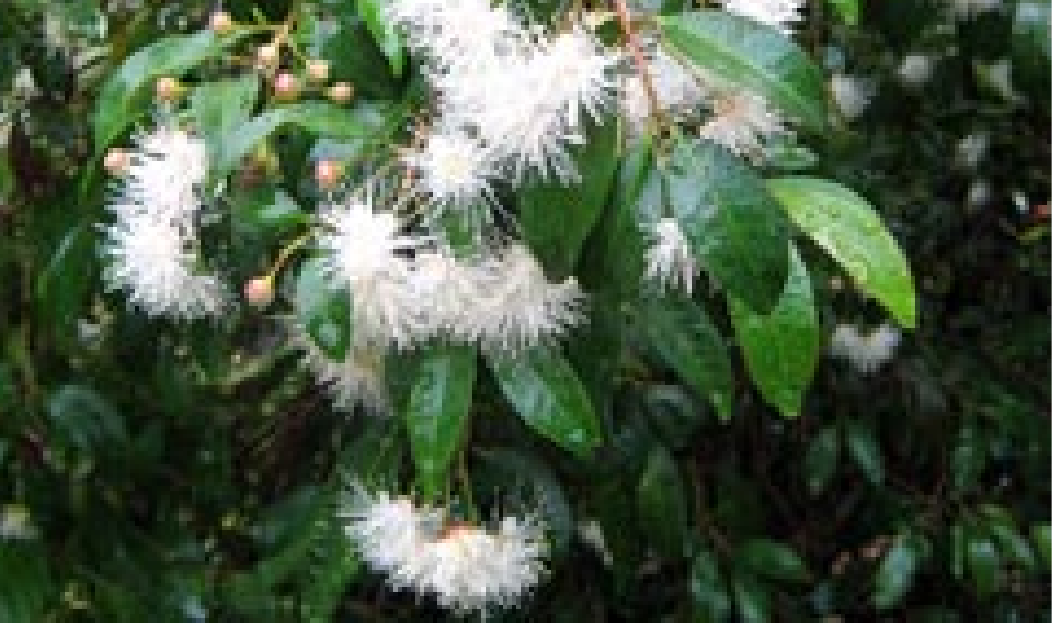
Syzygium australe is a small tree found in all types of warm rainforest. Commonly known as Brush Cherry, it is very common on the North Coast, particularly in the Nimbin area, and it is edible.
It is often found in damp gullies and by creeks. Purple/maroon fruits hang in abundance from winter to spring, and are a favourite bush tucker for the kids.
This very attractive evergreen tree is easy to grow and makes an excellent screen, garden or native planting for most situations.
For those interested, there is a very old tree on Calico Creek (on Blade Road, opposite the tip) that looks to have had many a camp and feast over the last couple of hundred years.
March
Broad-leaved palm lily - Cordyline petiolaris
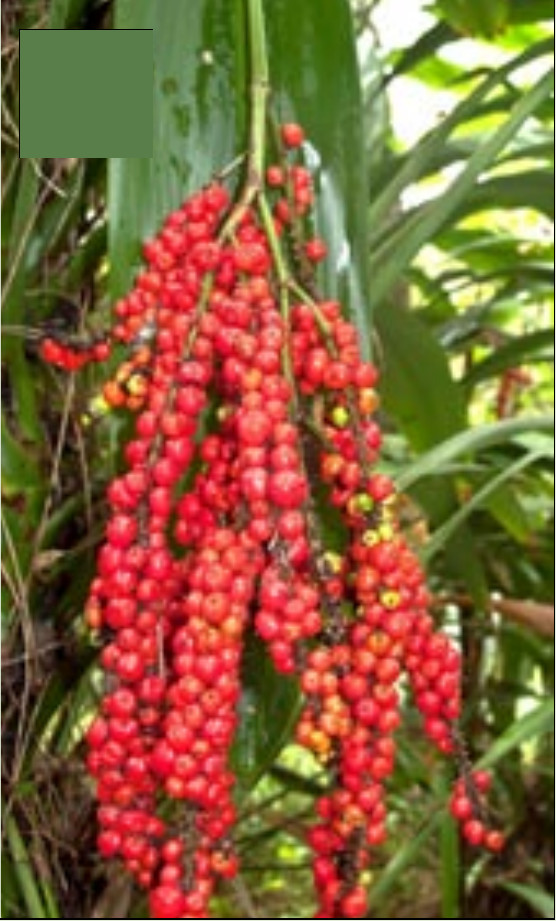
Although palm lilies are a common species in our local forests and remnants, Cordyline petiolaris with its bright red fruits hanging in long spikey clusters stands out like Mr Squiggle in a crowd.
Often found in the midst and edges of rainforest and wet sclerophyll forest, the broad-leaved palm lily with its flat green leaf foliage and summery purple/white flowers looks stunning as part of a filtered sun understory.
Broad-leaved palm lilies are an ideal plant when rehabilitating areas of bushland, whether planted or regenerated.
Cordyline petiolaris can grow to several metres in height. Despite having a tendency to look leggy when over ten years old, it can create a stunning landscape effect, particularly when mixed with the narrow leaves of the other red fruited palm lily (Cordyline ru’ora).
To propagate your own plants, sift fruits through a metal colander to remove pulp and sow in a well drained seed raising mix. They will germinate easily in a month or two and should be planted into moist well drained soil.
Febuary
Cinnamon myrtle / Grey myrtle - Backhousia Myrtifolia
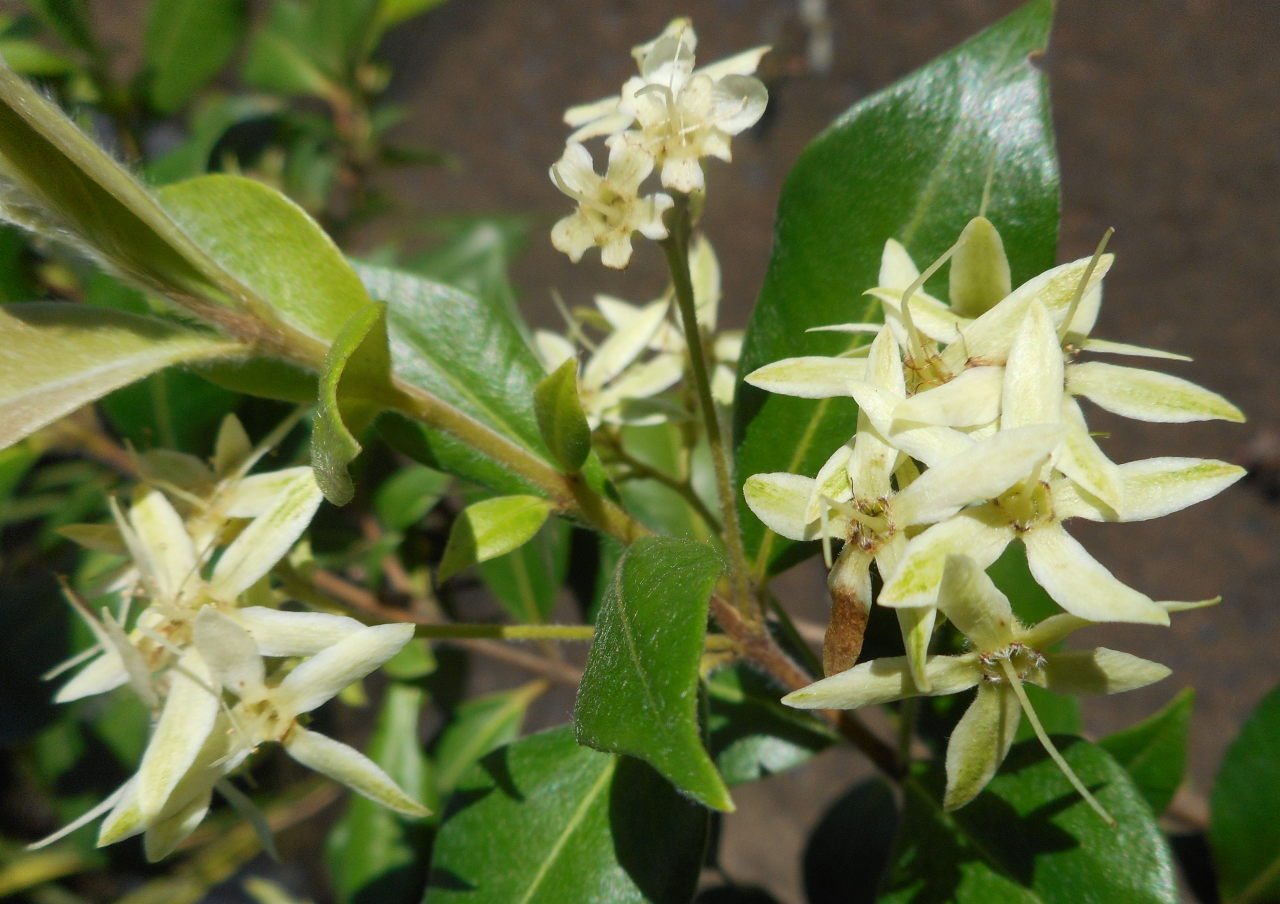
Cinnamon myrtle is a hardy small tree found along the NSW coast and SE Queensland. Very common in the Nimbin area, it dominates the creek line vegetation along Webster’s Creek and is also common along Goolmangar Creek, where its cream/white flowers warm up the summer landscape. Its dense form protects the creek line in times of the all too common raging torrents.
This is a great plant to introduce onto your regeneration projects as it copes with full sun and is reasonably hardy in frosty conditions, though I do recommend protection when young. It is also a good plant on the farm as it is a handsome landscape and screen plant, its dense green leaves introducing the enthusiast into the rainforest environment.
Those interested in bush foods will find interesting its popularity in the 90’s as a recommended spice plant, and hence the name given by Peter Hardwick ”Cinnamon Myrtle”.There were certainly some good selections available some years ago, if you see Peter have a yarn with him about it.
To grow your own, collect ripe seed in autumn and it is also reliable by cuttings, which is recommended. To see some specimens, they are quite common around the Webster’s Creek bridge at Stony Chute and in a landscape environment at the memorial baths in Lismore.















